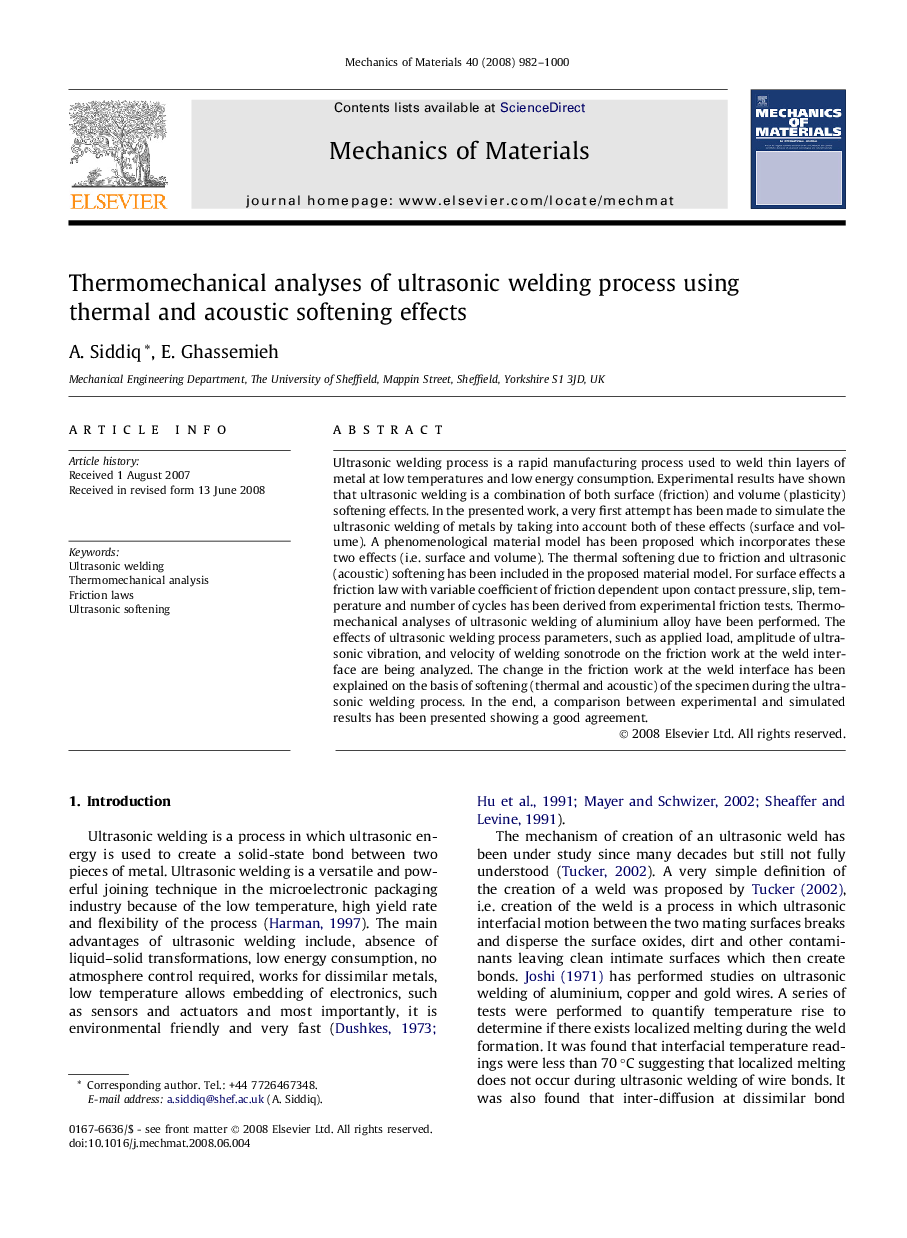| کد مقاله | کد نشریه | سال انتشار | مقاله انگلیسی | نسخه تمام متن |
|---|---|---|---|---|
| 797806 | 1467534 | 2008 | 19 صفحه PDF | دانلود رایگان |

Ultrasonic welding process is a rapid manufacturing process used to weld thin layers of metal at low temperatures and low energy consumption. Experimental results have shown that ultrasonic welding is a combination of both surface (friction) and volume (plasticity) softening effects. In the presented work, a very first attempt has been made to simulate the ultrasonic welding of metals by taking into account both of these effects (surface and volume). A phenomenological material model has been proposed which incorporates these two effects (i.e. surface and volume). The thermal softening due to friction and ultrasonic (acoustic) softening has been included in the proposed material model. For surface effects a friction law with variable coefficient of friction dependent upon contact pressure, slip, temperature and number of cycles has been derived from experimental friction tests. Thermomechanical analyses of ultrasonic welding of aluminium alloy have been performed. The effects of ultrasonic welding process parameters, such as applied load, amplitude of ultrasonic vibration, and velocity of welding sonotrode on the friction work at the weld interface are being analyzed. The change in the friction work at the weld interface has been explained on the basis of softening (thermal and acoustic) of the specimen during the ultrasonic welding process. In the end, a comparison between experimental and simulated results has been presented showing a good agreement.
Journal: Mechanics of Materials - Volume 40, Issue 12, December 2008, Pages 982–1000